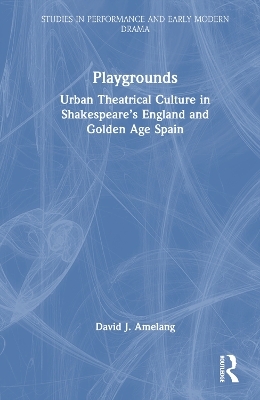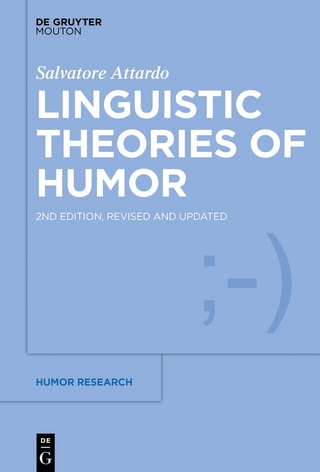
Playgrounds
Routledge (Verlag)
978-1-032-39944-7 (ISBN)
An exercise in multi-focal theatre history research, it deploys a wide range of perspectives and evidence with which to recreate the theatrical landscapes of these two countries and thus better understand how the specific conditions of performance actively contributed to the development of each country’s dramatic literature. This monograph develops an innovative comparative framework within which to explore the numerous similarities, as well as the notable differences, between early modern Europe’s two most prominent commercial theatre cultures. By highlighting the nuances and intricacies that make each theatrical culture unique while never losing sight of the fact that the two belong to the same broader cultural ecosystem, its dual focus should appeal to scholars and students of English and Spanish literature alike, as well as those interested in the broader history of European theatre. Learning from what one ‘playground’ – that is, the environment and circumstances out of which a dramatic tradition originates – reveals about the other will help solve not only the questions posed above but also others that still await examination.
This investigation will be of great interest to students and scholars in theatre history, comparative drama, early modern drama, and performance culture.
David J. Amelang is an assistant professor in English Literature at the Department of English Studies of the Universidad Autónoma de Madrid. He currently serves on the board of directors of the Madrid Institute for Advanced Study (MIAS) and of the Spanish and Portuguese Society for English Renaissance Studies (SEDERI).
List of Illustrations
Acknowledgements
Introduction
Chapter One: Cities
England and Spain’s Theatrical Capitals
Early Urban Theatre Districts
The Place of Theatres in English and Spanish Society
Playhouse Locations after Consolidation
Chapter Two: Playhouses
Why did English and Spanish Theatres Look so much Alike? A Few Genealogical Conjectures
The Organic Corral vs the Immutable Theatre
Seeing and Hearing (and Being Seen) in England and Spain’s Playhouses
Beyond the Bare Stage: Machines, Candles, Multi-Platforms
Interlude 1: Why did Madrid Not Have a Blackfriars?
Chapter Three: Players
Professional Playmakers in Early Modern Society
Company Models, Structure and Organisation
Touring Practices
Who Played the Female Roles? Women and Children on the Commercial Stage
Chapter Four: Dramatists
The Making of a Professional Playwright
Verse, Prose and Polymetry
Dramatic Genre(s)
Quantities of Writing and Notions of Artistry
Interlude 2: Professional Actresses: To Have and Have Not (and How it Made a Difference)
Chapter Five: Playbooks
Playbook vs Play: Printing Theatre in England and Spain
Publication Strategies, Licensing and Censorship
The Playbook in the Literacy Marketplace
Other Documents of Performance
Conclusion
Works Cited
Index
| Erscheinungsdatum | 12.12.2022 |
|---|---|
| Reihe/Serie | Studies in Performance and Early Modern Drama |
| Zusatzinfo | 19 Halftones, black and white; 19 Illustrations, black and white |
| Verlagsort | London |
| Sprache | englisch |
| Maße | 152 x 229 mm |
| Gewicht | 426 g |
| Themenwelt | Kunst / Musik / Theater ► Theater / Ballett |
| Geisteswissenschaften ► Sprach- / Literaturwissenschaft ► Anglistik / Amerikanistik | |
| Geisteswissenschaften ► Sprach- / Literaturwissenschaft ► Literaturwissenschaft | |
| ISBN-10 | 1-032-39944-9 / 1032399449 |
| ISBN-13 | 978-1-032-39944-7 / 9781032399447 |
| Zustand | Neuware |
| Informationen gemäß Produktsicherheitsverordnung (GPSR) | |
| Haben Sie eine Frage zum Produkt? |
aus dem Bereich


